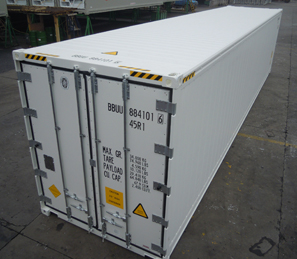<p style="text-align: justify;">When shipping items in a refrigerated storage container there are a number of things you need to consider. There are general tips and tricks to ensure that your precious cargo arrives as expected, within the set temperature range and without any damage to the product. If you are new to international temperature controlled shipping, this article will set you on the right path to getting it right the first time.</p>
<figure id="attachment_8342" aria-describedby="caption-attachment-8342" style="width: 297px" class="wp-caption aligncenter"><img class="size-full wp-image-8342 " title="List Of Things To Keep Cool" alt="List Of Things To Keep Cool" src="https://medusamagazine.com/wp-content/uploads/2013/10/401HC1.jpg" width="297" height="259" /><figcaption id="caption-attachment-8342" class="wp-caption-text">Refrigerated Storage</figcaption></figure>
<h3 style="text-align: justify;"><strong>Pre-Load Checklist</strong></h3>
<p style="text-align: justify;"><span style="text-decoration: underline;">Before loading your refrigerated container you should check it for a number of issues to ensure its proper functioning for the intended shipping.</span></p>
<p style="text-align: justify;">&#8211; Inspect the container to ensure the exterior is free from extensive damage that could affect the cooling of the internal compartment.<br />
&#8211; Check all door gaskets for proper seal.<br />
&#8211; Inspect the interior of the container, with the door closed to check for any gaps, holes or leaks that may be noticed by the presence of light.<br />
&#8211; The interior should be clean and free from refuse or odors.<br />
&#8211; The internal floor grates should be clean and free from debris.<br />
&#8211; All four floor drains are unblocked.<br />
&#8211; Data loggers are actively working and correct data has been recorded.<br />
&#8211; Required temperature and air vent settings are clearly visible and marked correctly.</p>
<h3 style="text-align: justify;"><strong>Loading the Container</strong></h3>
<p style="text-align: justify;"><span style="text-decoration: underline;">Making sure that the container is loaded properly is just as important to provide proper circulation of air to maintain consistent temperature ranges throughout the compartment.</span></p>
<p style="text-align: justify;">&#8211; Cargo should be pre-cooled to desired temperature in all instances.<br />
&#8211; Loading the cargo should be done as quickly as possible to keep the products internal temperature fluctuations to a minimum.<br />
&#8211; Avoid diesel/gas powered forklifts to avoid contamination of the container or product.<br />
&#8211; Do not load damage product or packaging as they could compromise other nearby product.<br />
&#8211; Load as close to product as possible. Keep the refrigeration unit off during and prior to loading.<br />
&#8211; Ensure proper airflow around product loaded in the container by using proper pallets, space between pallets, not stacking product too high to obstruct upper airflow ways and by not leaving excess space in front of doors or refrigeration machine.<br />
&#8211; After loading close the container as quickly as possible and turn on the refrigeration unit.</p>
<h3 style="text-align: justify;"><strong>Before Delivery to Terminal</strong></h3>
<p style="text-align: justify;"><span style="text-decoration: underline;">A final checklist before delivery to the shipping terminal should include the following items.</span></p>
<p style="text-align: justify;">&#8211; A final check on the proper operation of the refrigeration unit.<br />
&#8211; If using a back up generator, ensure its proper operation and a full tank of fuel.<br />
&#8211; Ensure temperature and vent settings are set properly and recorded properly in full view.<br />
&#8211; Seal the container with appropriate security seals.<br />
&#8211; Check that the driver understands that the cold chain is not to be interrupted during the land portion of the trip that s/he is responsible for.<br />
&#8211; The driver should also understand that s/he is responsible connection at the terminal of the container to appropriate electrical connections to ensure the refrigerated temperature is maintained.</p>
<p style="text-align: justify;">By following this quick checklist your refrigerated storage plan will be better implemented and insure that the goods that are shipped arrive in the same condition as they were sent. Cold chain supply lines are especially important for the shipment of anything for human consumption.</p>

List Of Things To Keep Cool

Refrigerated Storage